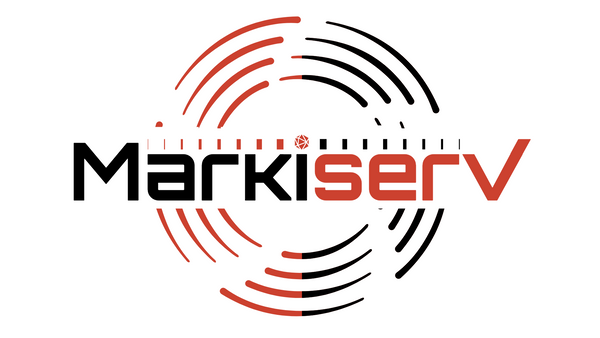
The Rise of Graphic Design Monthly Subscriptions
Share
Graphic design has become indispensable in shaping how businesses present themselves to their audience. In the age of rapid digital transformation, businesses are increasingly seeking innovative ways to access creative expertise without the logistical challenges of traditional methods. Enter graphic design monthly subscriptions—a game-changer that provides businesses with consistent, professional design services at predictable costs.
This blog delves into the history of graphic design subscriptions, their benefits to businesses, why they outperform traditional design models, and what the future holds for this burgeoning industry.
A Brief History of Graphic Design Subscriptions
The concept of graphic design subscriptions didn't appear out of thin air—it evolved over decades as businesses sought efficient ways to address their creative needs. By understanding the roots of this model, businesses can better appreciate how subscriptions have become a mainstay in today’s marketplace.
Early Beginnings: The Freelance Revolution
In the late 20th century, graphic design was a field dominated by agencies and in-house teams. Smaller businesses often lacked the resources to hire full-time designers or engage big-name agencies. This gap in the market led to the rise of freelance graphic designers.
Freelancing was an attractive option for companies due to its flexibility. Businesses could hire designers on a project-by-project basis, avoiding the long-term costs associated with full-time employees. Freelancers brought diversity and fresh ideas to the table, but challenges like inconsistent availability, variable quality, and lack of long-term collaboration soon became evident.
The Shift Toward On-Demand Services
The 2000s saw the rise of on-demand economies. As digital platforms like Upwork, Fiverr, and 99designs gained popularity, they revolutionized how businesses sourced creative work. These platforms connected businesses with global pools of freelance talent, making it easier than ever to find a designer for any project. However, the model wasn’t without flaws:
- Time-Consuming Processes: Businesses spent significant time vetting freelancers, negotiating contracts, and managing projects.
- Quality Variability: With a vast talent pool, ensuring quality and consistency was a gamble.
- Scalability Issues: Businesses with recurring or large-scale design needs often found managing multiple freelancers inefficient.
The need for a more streamlined solution gave rise to graphic design agencies offering subscription-based services.
The Birth of the Subscription Model
By the mid-2010s, the subscription economy had taken hold in various industries. Software companies led the way with SaaS (Software as a Service) models, while consumer brands like Netflix and Amazon Prime showcased the potential of recurring revenue streams. The graphic design industry quickly followed suit, introducing subscription-based models tailored to meet modern business needs.
Companies like Design Pickle and Penji pioneered this approach, offering flat-rate monthly plans that included access to professional design services. These services were especially appealing to startups, small-to-medium-sized businesses (SMBs), and marketing agencies. The subscription model addressed the pain points of previous design solutions:
- Predictability: Flat-rate pricing allowed businesses to budget design costs with confidence.
- Consistency: Dedicated teams ensured branding remained cohesive across all projects.
- Scalability: Flexible plans catered to businesses at different stages of growth.
Recent Developments
In recent years, the subscription model has expanded to include niche services tailored for specific industries. For example, healthcare providers now use subscription services to design patient education materials, while e-commerce brands leverage these models for product imagery and promotional campaigns.
Technological advancements have further fueled this growth. Tools like project management software and cloud-based design platforms have enabled subscription providers to streamline collaboration, enhance efficiency, and deliver designs faster.
The Benefits of Graphic Design Monthly Subscriptions for Businesses
Graphic design subscriptions are tailored to meet the unique needs of businesses operating in fast-paced, competitive markets. Here’s a deeper dive into the benefits they offer:
-
Cost Efficiency
For most businesses, design costs can be unpredictable. One project might cost $300, while a full branding overhaul can easily exceed $10,000. Subscriptions eliminate this variability by offering flat monthly rates.
Imagine a growing e-commerce company requiring 20 graphics per month for social media campaigns. Engaging a freelancer for this work could cost $100 per design, resulting in $2,000 monthly expenses. With a subscription, the same company might pay a predictable $1,000 and receive the same volume of designs, all while ensuring consistent quality and faster turnarounds.
Additionally, the flat-rate model aids financial planning, as businesses can allocate a fixed budget for creative services without surprise costs.
-
Scalability
As companies grow, their design needs evolve. A startup may require only a few designs initially but could scale up to needing complex projects such as website redesigns, marketing materials, or product packaging. Subscriptions allow businesses to upgrade their plans seamlessly, matching their growing demands without the overhead of expanding internal teams. -
Consistency in Branding
Inconsistent branding can dilute a company’s message and confuse its audience. With subscription services, businesses often work with the same team of designers who become well-versed in the brand’s guidelines, preferences, and voice. This ensures all designs—from social media posts to email campaigns—are cohesive and aligned with the brand’s identity.
For example, a SaaS company using a subscription service might launch a multi-channel campaign that includes web banners, email templates, and trade show materials. The consistent branding across these assets enhances professionalism and strengthens brand recognition.
-
Quick Turnarounds
Timeliness is critical in marketing. Subscription services streamline workflows, ensuring businesses receive their designs promptly. Whether it’s a last-minute event flyer or a promotional graphic for a flash sale, subscription providers are often equipped to deliver high-quality results within tight deadlines. -
Access to Expertise
Subscription services employ diverse talent pools, including branding specialists, UI/UX designers, and motion graphic experts. This breadth of expertise ensures businesses receive specialized solutions tailored to their needs, all under one umbrella.
How Monthly Subscriptions Outperform Hourly Contractors and In-House Teams
-
Flexibility Without Sacrificing Quality
Freelancers often juggle multiple clients, leading to delayed responses and inconsistent quality. Similarly, in-house teams might lack the bandwidth to handle surges in demand. Subscriptions offer a middle ground—dedicated resources with the flexibility to adapt to changing needs without compromising quality.
For example, a retail chain launching a seasonal campaign might need 50 unique designs in two months. Subscriptions provide the scalability to handle this workload efficiently.
-
Cost Savings on Overheads
Hiring an in-house designer involves more than just paying salaries. Businesses must also account for software licenses, hardware, and ongoing training. Subscriptions eliminate these costs while delivering the same (or better) level of quality. -
Streamlined Workflows
Freelancers may work independently of a business’s processes, while in-house teams often deal with bureaucratic bottlenecks. Subscription services use standardized platforms and workflows that simplify collaboration, project management, and delivery. -
Innovation Through Specialized Expertise
Subscription services often incorporate designers familiar with the latest trends and tools, giving businesses access to cutting-edge creative solutions that freelancers or in-house teams might not always provide.
The Future of Graphic Design Subscriptions
As the subscription economy grows, graphic design services are set to evolve in innovative ways:
-
AI-Powered Tools
Advanced AI tools like Adobe Firefly and Canva’s AI features are enhancing creative processes, enabling subscription providers to deliver designs faster and with greater customization. -
Industry-Specific Solutions
Niche-focused subscriptions tailored for industries such as healthcare, education, and e-commerce will emerge, offering specialized expertise and compliance with sector-specific standards. -
Global Collaboration
With remote work becoming the norm, subscription services will increasingly leverage global talent pools, providing businesses with diverse and culturally relevant designs. -
Integrated Creative Ecosystems
Future providers may bundle graphic design with complementary services like copywriting, video production, and digital marketing, creating holistic solutions for businesses.
Why Businesses Should Consider Subscriptions Today
The decision to adopt a graphic design subscription model isn’t one to take lightly. For businesses evaluating this approach, understanding the broader implications and potential challenges can help ensure they make the right choice.
- The Cost Factor
One of the primary reasons businesses gravitate toward subscription services is cost efficiency. However, it's important to dig deeper:
- Short-Term Savings vs. Long-Term Value: While subscriptions offer immediate savings compared to in-house teams, their long-term value lies in the consistent output and access to a range of expertise. Businesses should evaluate their needs over 12–24 months to determine if the model aligns with their growth trajectory.
- Avoiding Overpayment: Some subscription plans cater to high-volume design needs, which may not suit businesses with sporadic or minimal requirements. Companies should carefully assess their design workload to select the most appropriate plan.
- Aligning Expectations
Not all subscription providers operate at the same level. While many promise “unlimited designs,” businesses must understand the scope of services and limitations:
- Turnaround Times: Subscriptions often operate on a “queue” system, meaning businesses may need to wait several days for each project to be completed. Ensuring these timelines align with marketing calendars is crucial.
- Complexity of Projects: Certain designs, like intricate illustrations or 3D renders, may require additional time or incur extra fees. Clarifying these details upfront helps prevent misunderstandings.
- Integration with Existing Teams
Businesses with in-house marketing or design teams may wonder how subscription services fit into their workflows. Subscriptions can complement internal teams by handling overflow work, enabling staff to focus on high-priority or strategic tasks. Clear communication channels and well-defined roles are essential for a seamless partnership.
For example, an internal team might focus on brand strategy and key campaigns, while the subscription provider handles day-to-day tasks like social media graphics and email templates.
- Ensuring Consistency in Branding
Branding consistency is a significant advantage of subscription services. However, achieving it requires businesses to actively participate in the onboarding process:
- Providing Comprehensive Brand Guidelines: Clear documentation of logo usage, color schemes, typography, and tone ensures designs align with the brand’s identity.
- Regular Feedback: Establishing a feedback loop with designers helps refine the output over time, ensuring continuous improvement.
- Leveraging Additional Features
Many subscription providers go beyond basic design services, offering value-added features such as:
- Dedicated Account Managers: Acting as liaisons between businesses and designers, account managers simplify communication and project coordination.
- Project Management Tools: Built-in tools allow businesses to track design requests, provide feedback, and approve final versions with ease.
- Access to Specialized Designers: Whether it’s motion graphics, packaging design, or UI/UX, subscription providers often have diverse talent pools that cater to niche needs.
- Adapting to Future Trends
The graphic design industry is evolving rapidly, and subscription models are no exception. Businesses should consider how these services are preparing for future challenges and opportunities:
- AI Integration: Subscription providers leveraging AI tools can offer faster, more customized designs. Businesses should evaluate whether these advancements align with their creative goals.
- Sustainability Practices: As eco-conscious branding gains prominence, providers that prioritize sustainable design practices (e.g., digital-first assets, minimalist packaging) will become increasingly valuable partners.
- The Value of Long-Term Relationships
Unlike one-off freelancers, subscription providers thrive on building long-term partnerships. This relationship-based model benefits businesses in several ways:
- Better Understanding of Brand Needs: Over time, subscription providers become well-versed in a company’s preferences, reducing the need for constant rebriefing.
- Proactive Support: Long-term clients often receive priority support and access to exclusive features, enhancing the overall value of the service.
Conclusion
Graphic design monthly subscriptions are transforming how businesses access creative services. Offering cost efficiency, consistency, and scalability, they surpass traditional models like hourly contracting and in-house teams. As industries adapt to a visually driven future, these services will play a pivotal role in helping businesses stand out, connect with audiences, and achieve lasting success.
Helpful Links to Learn More:
How Branding Drives Business Success (HubSpot)
HubSpot’s article explores the role of branding in business growth and discusses how graphic design is crucial to building a memorable brand identity.
Top Graphic Design Trends for 2025 (Adobe)
Adobe’s annual trends report provides valuable insights into emerging graphic design trends and technologies that will shape the future of the industry.
